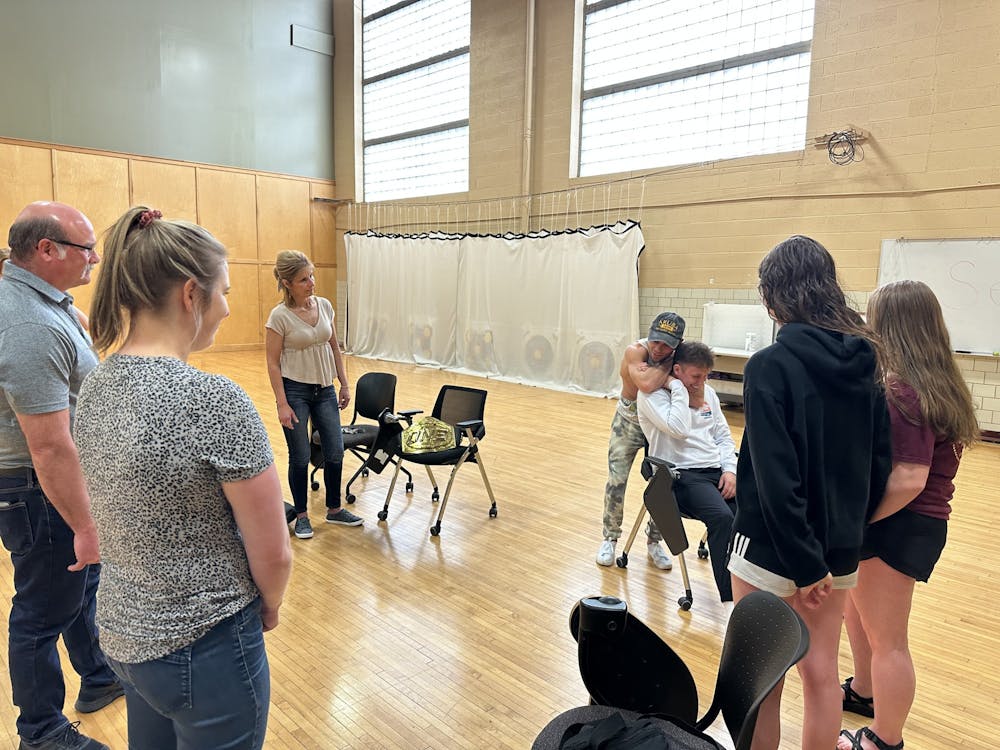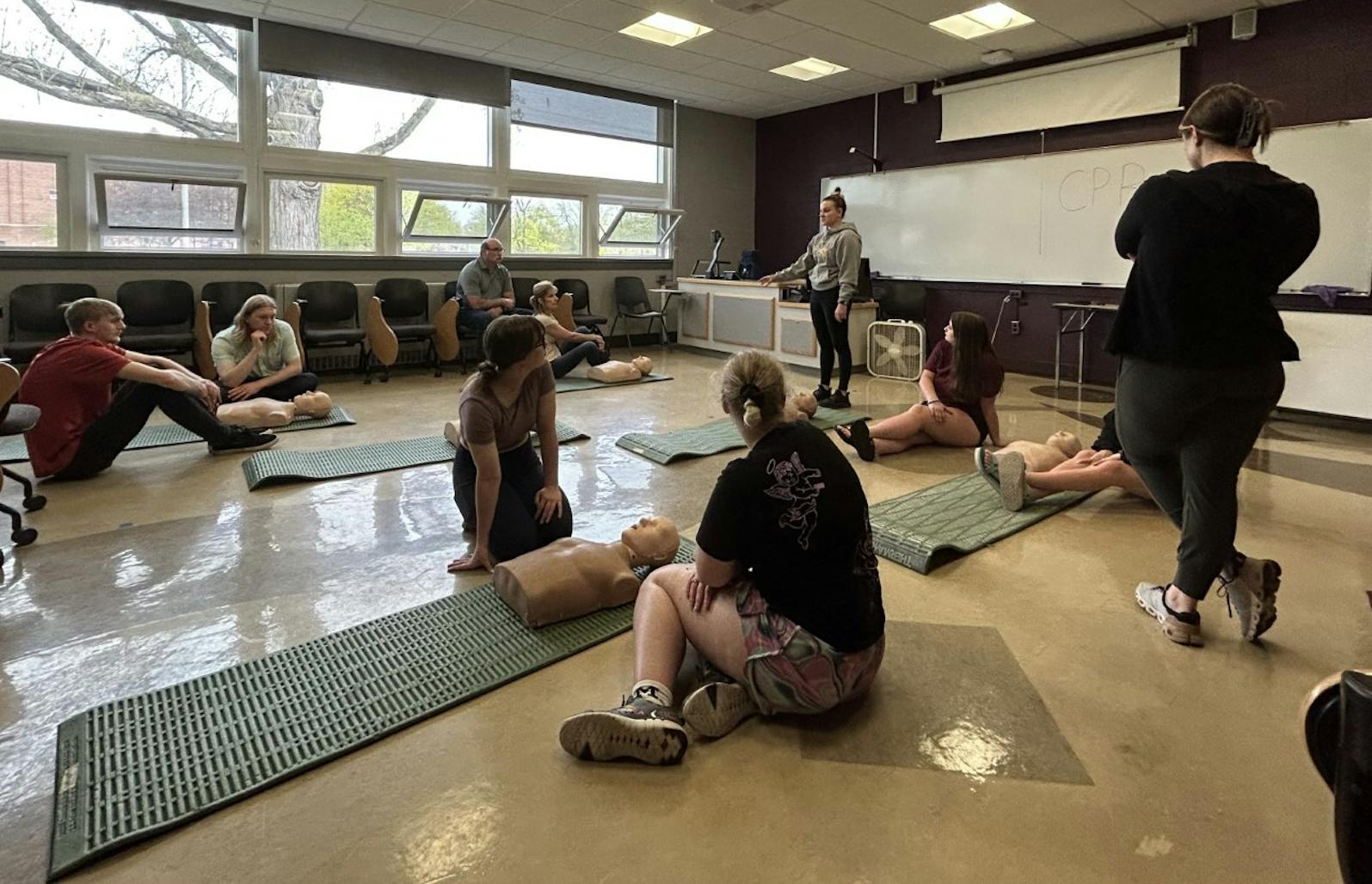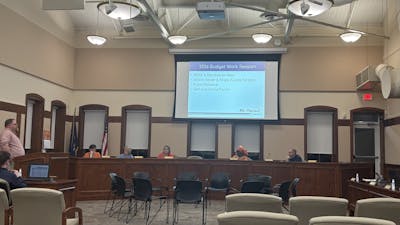CMU students hold seminar for learning safety skills

There are some emergency skills we hope we’ll never use, but it’s good to be prepared if the need arises.
Students in the parks and leisure 430 class partnered with their department to offer short classes on these skills at Finch Fieldhouse on Sunday, April 16.
There were four different half-hour sessions offered:
- Fire safety
- Self-defense
- CPR (cardiopulmonary resuscitation)
- First Aid
Fire safety
This course was taught by three members of the Mount Pleasant Fire Department: Sgt. Rich Clark, Sgt. Will Millikin and Officer Roger Fuller.
They answered questions from the 10 audience members as they reviewed smoke alarms, carbon monoxide alarms, fire extinguishers, escape plans and lithium ion batteries.
There are a few things that apply directly to college students, especially those living in residential halls. For starters, most power strips are made for lamps and alarm clocks, not box fans and laptop chargers, Clark said.
“Check the gauge, it’ll be right on the box,” Clark said. “The higher the better.”
They also brought up lithium ion battery fires as a risk for college students who have devices like electric scooters that charge indoors.
Clark said a fire usually starts when operators use the wrong kind of charger for the battery. People will get a charger that works faster, but that risks overheating the machine.
Fuller added that students with electric scooters or similar devices would have to choose between leaving expensive equipment outside overnight or charging it indoors and risking a fire in their living space.
He said this is probably an issue CMU will need to look at, as more students get devices with lithium ion batteries and need a safe and secure place to store them.
Self defense
A self-defense seminar helped students learn basic self-defense techniques during mugging or assault situations. The seminar was led by Jarred Brooks, a World Champion in Mixed Martial Arts (MMA) and an expert in tactical jujitsu techniques.
"Learning mixed martial arts is one of the best ways to prepare oneself for self-defense situations," Brooks said, "as it includes various techniques from different disciplines, making it an effective way to defend oneself in a variety of situations."
The seminar focused on teaching students how to stay calm and assess situations, as well as simple one-on-one techniques to defend oneself from attacks. Brooks emphasized the importance of getting away from the situation as soon as possible and getting rid of the assailant in front of them.
Several women at the event said it was beneficial for them. Brooks encouraged everyone to build their confidence and knowledge of self-defense, as it can make a significant difference in real-life situations. He also highlighted the importance of running in self-defense situations; it can help individuals get away quickly and minimize harm.
Brooks said many police officers and armed service members use jujitsu techniques, which are a part of MMA, to get away from simple attacks or situations where someone is getting in their face.
The event was well-received by students, as it brought awareness to the importance of self-defense and helped them build character in real-life situations.
CPR
Molly Meehan led the CPR training session, after working with Mobile Medical Response (MMR) for several years.
She walked the people in the class through the step-by-step process for giving CPR, and they got to practice giving chest compressions to the beat of “Stayin’ Alive” by the Beegees on practice dummies.
Meehan also said that for people who don’t know CPR but are in a situation where they need to give it, emergency dispatchers who respond to a 911 call will walk callers through the process.

Caitlyn McIngvale was in this session. She is a CMU student who needed to get certified for her degree.
“It’s a lot simpler than a lot of people think it is,” she said. “It’s a good skill to have.”
These are the steps to providing CPR:
- Check your surroundings: If the person you’re assisting was injured by something that could hurt you as well, get yourself out of the situation.
- Check for breathing and a pulse: If they have neither, proceed with CPR and call 911
- Chest compressions are given 30 at a time, alternating with two breaths
- To give chest compressions, interlock your fists and press two inches into the injured person’s chest
- These should be given at about 100 beats per minute, or to the beat of "Stayin' Alive" by the Bee Gees.
Note: these instructions do not include directions on giving rescue breaths or continuing care. If you intend to give CPR, please watch this instructional video from Pro CPR or get certified.
First aid
Lauren Cunningham was one of the presenters for the first aid session. Attendees at this session learned the basic components of a first aid kit, how to approach an open wound, the best way to help someone who’s choking and what to do if someone’s struggling to stay afloat in water.
Several of the six people at this session were planning to work as camp counselors over the summer or have career paths that have them working with kids.
They walked through how to perform the heimlich maneuver, which is intended to help someone who is choking.
Cunningham said the most important first step for any scenario where first aid is required is to gauge what you’re capable of because you can only help others when you yourself are safe.
“(It’s about) how to protect yourself when helping others,” Cunningham said.






